Welcome fellow plant enthusiasts!
Today, we’re diving into the world of the Spider Plant, a fantastic addition to any indoor or outdoor garden. Whether you’re a seasoned green thumb or a novice gardener, these hardy and adaptable plants are a perfect choice.
In this article, we’ll explore the benefits of growing Spider Plants and take a closer look at some of my favorite varieties.
Benefits of Growing a Spider Plant
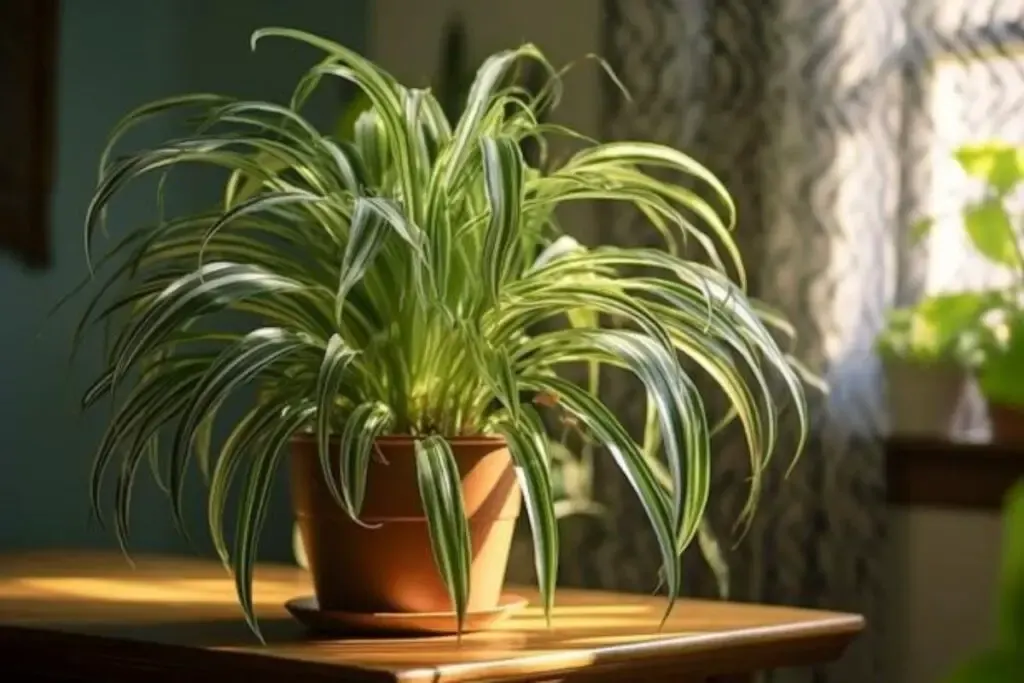
Spider Plants, scientifically known as Chlorophytum comosum, are renowned for their numerous benefits. Here are three compelling reasons why you should consider adding them to your collection:
1. Air Purification
Spider Plants are exceptional air purifiers. They can help remove common indoor pollutants like formaldehyde and xylene, promoting cleaner and healthier indoor air. This makes them an ideal choice for homes or offices.
2. Low Maintenance
If you’re a busy individual or just starting your journey as a plant parent, Spider Plants are incredibly forgiving. They are low-maintenance and can tolerate occasional neglect. Just water them when the soil dries out, and they’ll thrive.
3. Easy Propagation
Spider Plants are generous when it comes to propagating. They produce “spiderettes” or small offshoots that can be easily separated and planted in new pots, expanding your collection without much effort.
My Favorite Spider Plant Varieties
Spider Plants come in various captivating varieties, each with its unique charm.
Here are three of my personal favorites:
1. Chlorophytum Comosum ‘Vittatum’ (Variegated Spider Plant)
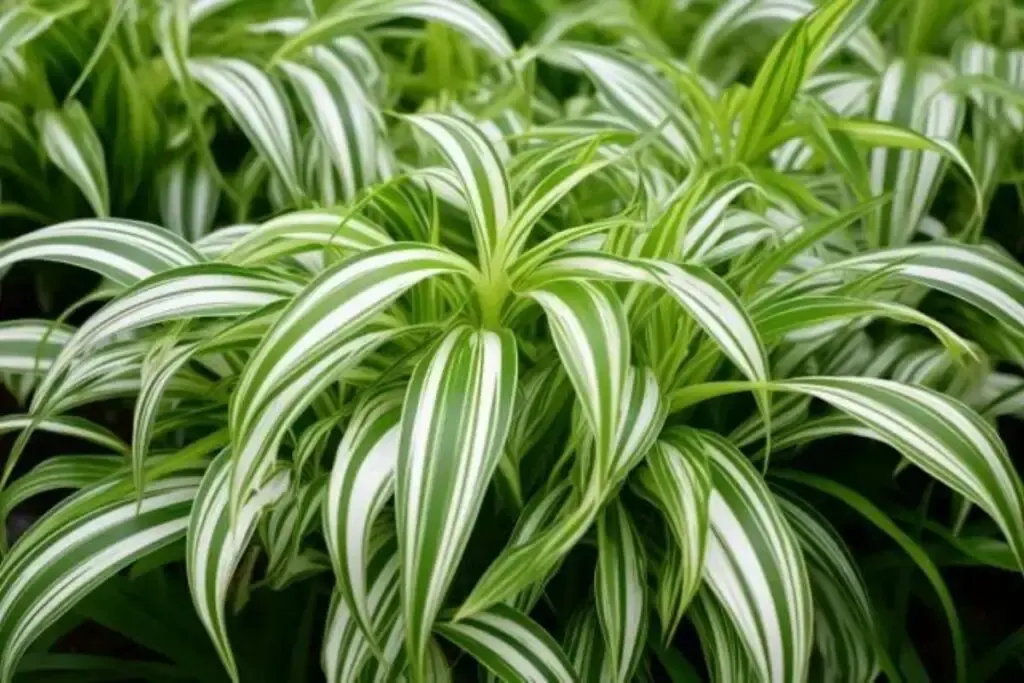
This classic variety features elegant, arching leaves with green edges and creamy-white stripes in the center. It’s a striking addition to any room, adding a touch of brightness and air-purifying qualities.
2. Chlorophytum Comosum ‘Bonnie’
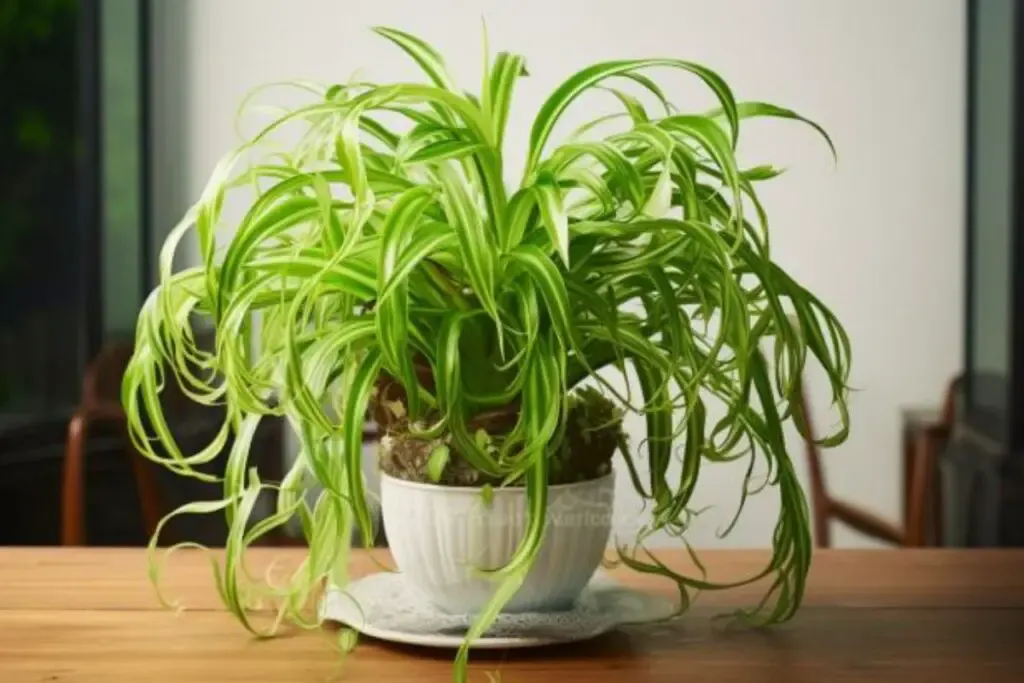
The ‘Bonnie’ Spider Plant is known for its compact size and distinctive curly leaves. Its small stature makes it perfect for hanging baskets or as a table centerpiece. It’s a real eye-catcher.
3. Chlorophytum Comosum ‘Ocean’
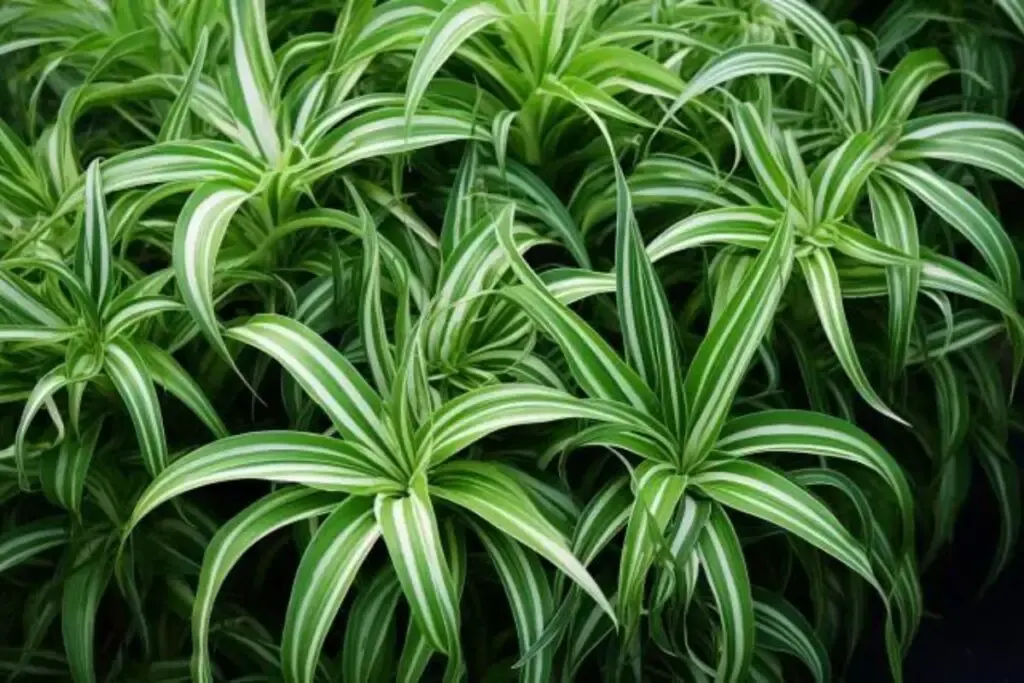
The ‘Ocean’ Spider Plant is named for its unique coloration. It boasts green leaves with a central band of rich, deep green, resembling the depths of the ocean. This variety adds a calming and refreshing touch to your indoor spaces.
Remember, Spider Plants are versatile, and you can mix and match these varieties to create a stunning display of contrasting colors and textures in your garden.
Spider Plant Care
Spider Plants are not only beautiful but also relatively easy to care for. To help you ensure your Spider Plant thrives, let’s break down the essential aspects of caring for them.
Planting
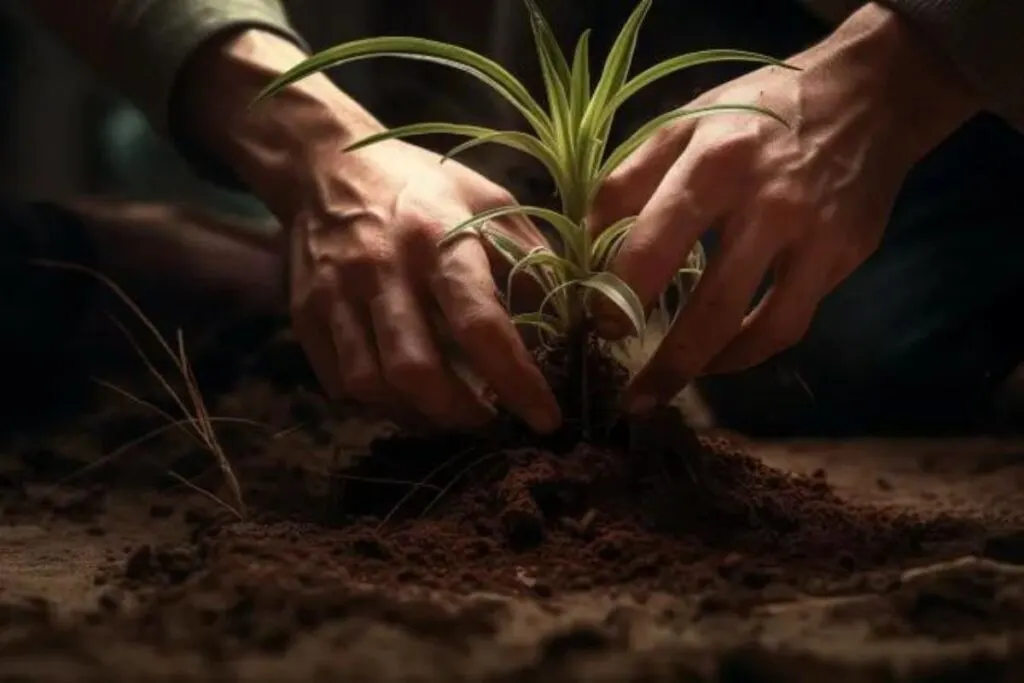
When it comes to planting Spider Plants, you have a few options. You can either choose to pot them in containers or place them directly on the ground if you live in a suitable climate. Here are some tips for both methods:
- Container Planting: Use a well-draining potting mix and select a container with drainage holes. Repot your Spider Plant when it outgrows its current pot.
- Ground Planting: If you’re lucky enough to live in a warm and frost-free region, you can plant Spider Plants directly in the ground. Ensure the soil is well-draining and amend it with organic matter to improve fertility.
Light
Spider Plants are adaptable when it comes to lighting conditions, but they do have preferences. Here’s what you need to know about light:
- Indirect Light: Spider Plants thrive in bright, indirect light. Avoid placing them in direct sunlight, as it can scorch their leaves. If you notice their leaves turning brown, it’s a sign they’re getting too much sun.
- Low Light Tolerance: These plants can also tolerate low light conditions, making them suitable for areas with less natural light. However, their growth may slow down in such conditions.
Soil
Choosing the right soil for your Spider Plant is crucial for their overall health. Here are some soil-related considerations:
- Well-Draining Soil: Spider Plants prefer a well-draining potting mix. A mix designed for tropical plants or a blend of potting soil and perlite works well.
- pH Level: Aim for a slightly acidic to neutral pH level (around 6.0 to 7.0) in the soil for optimal growth.
Water
Proper watering is key to keeping your Spider Plant healthy. Follow these guidelines to avoid overwatering or underwatering:
- Allow Drying: Water your Spider Plant when the top inch or two of the soil feels dry to the touch. Ensure that your pot has drainage holes to prevent waterlogged soil.
- Reduce Watering in Winter: During the winter months when the plant’s growth slows down, reduce the frequency of watering. Be cautious not to let the plant sit in wet soil.
Temperature and Humidity
Maintaining the right temperature and humidity levels is essential for Spider Plant care:
- Temperature: Spider Plants thrive in temperatures between 60°F to 75°F (15°C to 24°C). They can tolerate slightly cooler temperatures but should be protected from frost.
- Humidity: While they are adaptable, Spider Plants appreciate moderate humidity. If you live in a dry climate, consider using a humidity tray or a room humidifier.
Fertilizer
Spider Plants don’t require heavy feeding, but they do benefit from occasional fertilization:
- Fertilize Sparingly: Use a balanced liquid fertilizer diluted to half strength during the growing season (spring and summer). Reduce or stop fertilizing in the winter when the plant’s growth slows down.
Pruning
Pruning Spider Plants is relatively straightforward and can help maintain their health and appearance. Here’s how to do it:
- Remove Dead Leaves: Regularly remove yellow or brown leaves to encourage new growth and maintain the plant’s overall aesthetic.
- Trim Spiderettes: If you want to control the size of your Spider Plant, trim the spiderettes (small offshoots) and propagate them to create new plants.
Propagating
Spider Plants are exceptionally generous when it comes to propagating. Here’s how you can create new plants from your existing ones:
- Spiderette Propagation: Cut spiderettes (small plantlets) with a sharp, clean pair of scissors or pruning shears. Plant them in a small pot with well-draining soil, and they will develop into new Spider Plants.
- Division: If your Spider Plant has grown quite large, consider dividing it. Carefully remove the plant from its pot, separate the root ball into sections, and replant them individually in suitable pots or locations.
How to Grow a Spider Plant From Seed
While Spider Plants are more commonly propagated by spiderettes or division, you can grow them from seed if you prefer. Here’s how:
- Seed Collection: Wait for your mature Spider Plant to produce seed pods. Collect the seeds when the pods are dry and brown.
- Sowing Seeds: Plant the seeds in a well-draining potting mix, barely covering them with soil. Keep the soil consistently moist, and place the pot in a warm and well-lit location.
- Germination: Spider Plant seeds can take a few weeks to germinate. Once they sprout, continue caring for them as you would for mature plants.
Growing in Pots
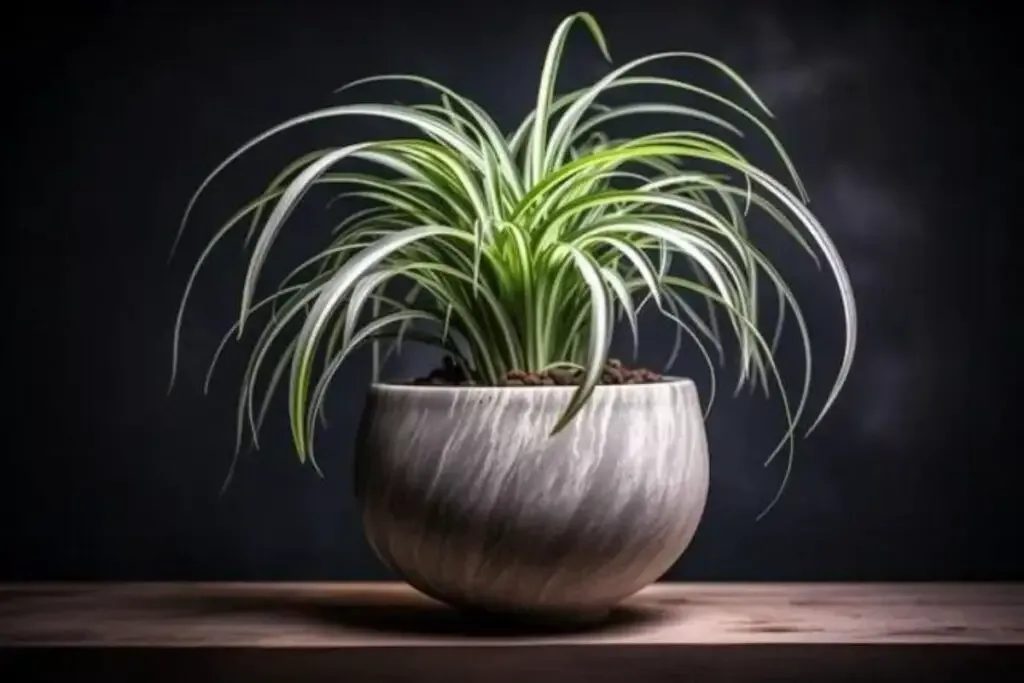
Spider Plants are well-suited for container gardening, whether indoors or on a patio. Here are some tips for growing them in pots:
- Choose the Right Pot: Select a pot with drainage holes to prevent overwatering. Ensure it’s large enough to accommodate the plant’s root system and leave room for growth.
- Repot as Needed: As your Spider Plant grows, it may outgrow its current pot. Repot it into a slightly larger container to give its roots room to spread.
- Soil and Watering: Use a well-draining potting mix and water when the top inch of soil is dry. Be cautious not to let the plant sit in standing water.
Overwintering
Spider Plants typically fare well indoors during the winter, but here are some overwintering tips:
- Reduce Watering: Spider Plants go through a dormant period in winter. Reduce watering to keep the soil barely moist.
- Maintain Indirect Light: Continue providing bright, indirect light to prevent leggy growth.
Transplanting
If you need to transplant your Spider Plant, whether due to size or aesthetic reasons, follow these steps:
- Choose a New Location: Select a location with suitable lighting conditions and well-draining soil.
- Carefully Remove the Plant: Gently remove the plant from its current pot or location, taking care not to damage the roots.
- Replant: Place the Spider Plant in its new home, ensuring the soil level matches its previous depth. Water it thoroughly after transplanting.
Common Pests & Diseases
Spider Plants are generally resilient, but they can still face a few issues:
- Spider Mites: These tiny pests can infest Spider Plants, causing webbing and damage to leaves. Treat them with insecticidal soap or neem oil.
- Mealybugs: Mealybugs can also attack Spider Plants. Remove them manually or use insecticidal soap.
- Root Rot: Overwatering can lead to root rot. Ensure the plant’s pot has proper drainage and adjust your watering habits to prevent this issue.
By following these guidelines for pruning, propagating, growing from seed, and dealing with common challenges, you’ll be well-equipped to care for your Spider Plants and keep them thriving year-round. Happy gardening!

